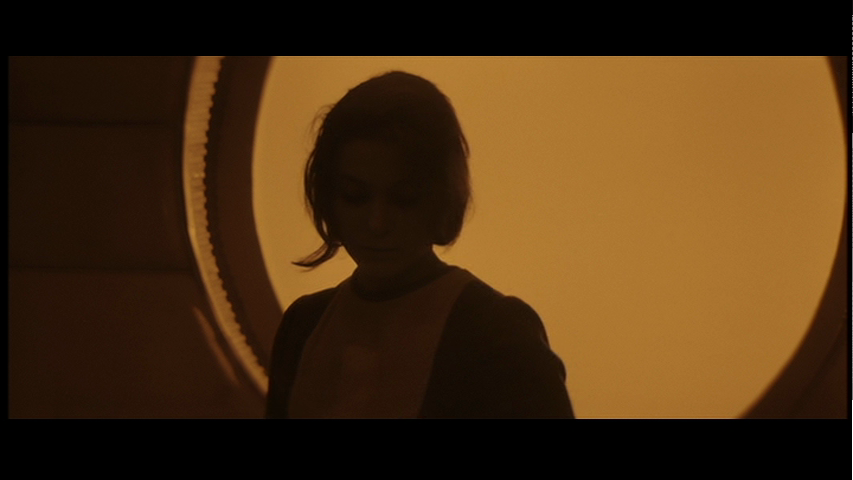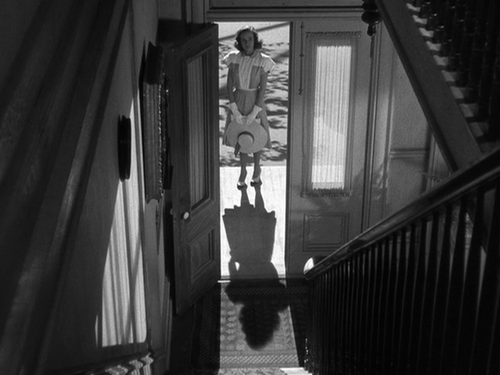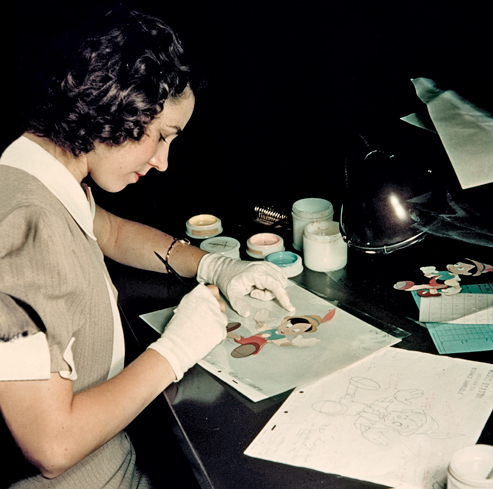Solaris (1972). Something of a lyrical Russian follow-up to 2001: A Space Odyssey, a story of personal grief and longing set aboard a space station hovering over an abyssal alien ocean. Great use of understated sets and on-Earth scenery with allusions to the style of the Old Masters. Between Solaris, Alphaville, and Children of Men, I’m discovering that my favorite cinematic dystopian futures are the ones that make little or no effort to appear futuristic.
Tag: film
-
Solaris

-
Hirokazu Kore-edas ワンダフルライフ Wandâfuru Raifu (Afterlife)

From Hirokazu Kore-eda’s ワンダフルライフ (Wandâfuru raifu), released in the U.S. in 1998 as Afterlife. This is likely my favorite movie of all time. Dig up a copy at your neighborhood indie video store when you get a chance, it’s good. It’s a simple, quiet parable about life, death, loss, memory, love, and cinema, somewhere between Kurosawa’s Ikiru and Michel Gondry’s Eternal Sunshine.
After whining for years about someone borrowing my out-of-print DVD copy without returning it, I finally looked around and discovered the vastly superior Japanese NTSC Region 2 copy of the movie. ¥3,990 later, I’m now able to enjoy it again as I saw it at the theater in anamorphic widescreen, optional subtitles, and none of the horrible digital low-pass smoothing that someone thought would “fix” the grainy 16mm film’s appearance. Time for a movie screening, I think…
-
Notorious

Hitchcock’s Notorious. Ingrid Bergman hired to spy on former Nazis in Rio largely on the grounds of her notable promiscuity, with nuclear age intrigue so current for 1945 that the FBI had Hitchcock under surveillance. Tense stuff once the plot gets rolling, and a great unraveling ending.
Also worth watching for its top-notch use of rear projection special effects: if you think that modern movies and tv shows use a surprising amount of green screen for inserting fake backgrounds, it’s worth remembering that it’s an old idea. All of the foreground action for Notorious was filmed on set in California, with background footage shot by a 2nd production crew in Rio and Miami, beautifully worked in behind the actors so that it’s really hard to tell sometimes.
-
Breakdowns of 1936 — Warner Brothers Bloopers
Breakdowns of 1936, Warner Bros’ annual in-house blooper reel (surprisingly uncensored). At least now I know what the most common swear was in 1936!
(Via Coudal Partners)
-
Waiting for Guffman

Waiting for Guffman. A lot of folks don’t seem to know that this one was filmed in Austin and Lockhart, TX, so there’s that bit of trivia for you. There are also some very quick cameos by David Cross, Brian Doyle-Murray (Bill Murray’s older brother), and in a very obscure part as the guy mouth-juggling ping pong balls, Turk Pipkin.
Parker Posey grilling a single chicken wing is one of the saddest things I’ve ever seen committed to film.
-
Shadow of a Doubt

Slowly working my way through all of Hitchcock’s oeuvre, moving on to some of his films that haven’t fully entered our pop culture lexicon. Shadow of a Doubt was one of his better early American movies, with some nifty subtext, a minor tinge of telepathy, and possible vampiric overtones. Definitely a 1942 pre-war Americana kind of movie, but with the signature Hitchcock dark humor and psychological uneasiness that turns the Norman Rockwell small town on its head.
-
Animation: production vs. post
Mark Mayerson writes a pretty good rebuttal to the idea that the animators that worked on James Cameron’s Avatar were shortchanged by the film’s placement as a live-action feature:
“I’ve written extensively on how fragmented the process of making an animated film is and how so many of the acting decisions are made before the animator starts work. The character designs, the storyboard and the voice performance all make acting decisions that constrain the animator’s interpretation. There is no question that motion capture is yet another constraint, probably larger than all the others. To insist that Avatar is an animated film is to marginalize animators even more than they are in what are generally considered animated films. Is this the direction we want things to go? Better to agree with James Cameron and focus our attention on films where animators create, not enhance, performances.”
-
Vanity Fair on Disney’s Ink & Paint “Girls”

From a good piece in this month’s Vanity Fair, “Coloring the Kingdom”, about the often-unsung Ink and Paint “girls” that cranked out most of the hand painting for Disney’s early feature days:
The end of the assembly line usually inherits all the problems. Preparing the animators’ vision for camera required the inking and painting of thousands of fragile, combustible cels with perfect refinement. During Snow White, it was not at all unusual to see the “girls”—as Walt paternalistically referred to them—thin and exhausted, collapsed on the lawn, in the ladies’ lounge, or even under their desks. “I’ll be so thankful when Snow White is finished and I can live like a human once again,” Rae wrote after she recorded 85 hours in a week. “We would work like little slaves and everybody would go to sleep wherever they were,” said inker Jeanne Lee Keil, one of two left-handers in the department who had to learn everything backward. “I saw the moon rise, sun rise, moon rise, sun rise.” Painter Grace Godino, who would go on to become Rita Hayworth’s studio double, also remembered the long days merging into nights: “When I’d take my clothes off, I’d be in the closet, and I couldn’t figure it out: am I going to sleep or am I getting up?”
(Via Mayerson on Animation. Photo © Walt Disney Productions/Photofest.)
-
Sylvain Chomet‘s The Illusionist

The Illusionist, Sylvain Chomet’s first new animated film since The Triplets of Belleville (not counting the ill-fated Tales of Despereaux production) will finally be released soon, at least on the festival circuit. Hope it comes out in a wider release before too long!
(Via The Ghibli Blog)
-
Scribble Junkies
Animators of note Bill Plympton and Patrick Smith have started a new blog where they can argue about animation, story telling, illustration, and whatever. An immediate add to my news reader!
